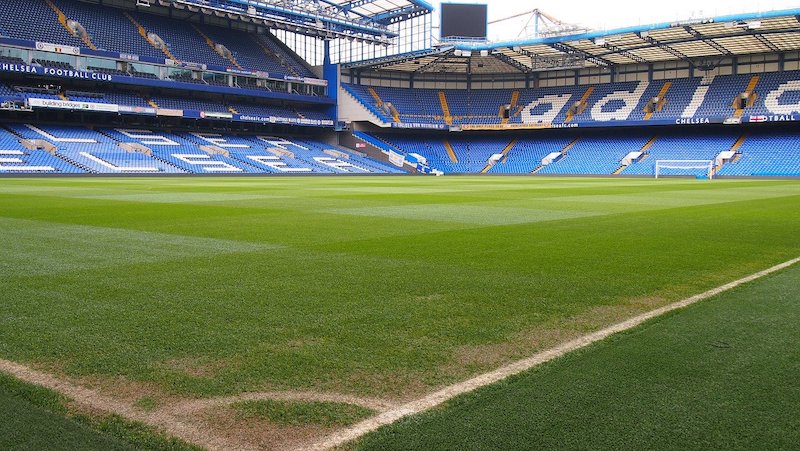By Renata Leite, FootballPredictions.NET, 20:29 06/09/2020
Updated at: 20:29 06/09/2020

Situated in southwest London, and a short walk from the Fulham Broadway London Underground station stands Stamford Bridge, the long-term home of Chelsea Football Club.
Chelsea’s stadium, or ‘The Bridge’ as it is often referred to, has seen many memorable moments during its 143-year history. From the Blues’ first league title in 1954 to the arrival of Jose Mourinho 50 years later, the classic English ground is steeped in history.
As the club has grown from strength to strength, Stamford Bridge has also had its fair share of renovations to match Chelsea’s on-field feats. As football moves into the 21st century with stadiums such as Tottenham Hotspur’s new £1billion arena in North London, the Blues have released plans that will see Stamford Bridge’s capacity expanded once more.
Stamford Bridge opened as one of England’s top stadia
Stamford Bridge was officially opened in 1877 but was initially the home for the London Athletic Club. It wasn’t until 1904 when Gus and Joseph Mears acquired the lease with the intention of staging high-profile football matches there that football came to the forefront of plans for the stadium’s future.
The Mears brothers had full control over the ground, and it was offered to Fulham Football Club, who turned it down due to financial reasons. As a result, Gus and Joseph founded Chelsea Football Club to fill the unoccupied stadium.
At the time, Stamford Bridge had an official capacity of 100,000, which made it the second-largest stadium in England behind Crystal Palace.
The stadium’s rich history in greyhounds and athletics
When ‘The Bridge’ was originally constructed, there was an athletics track surrounding the pitch. Much like West Ham United’s Olympic Stadium now, there was a substantial gap between spectators and the pitch itself.
In July 1993, the Greyhound Association (GRA) brought greyhound racing to Stamford Bridge, which forced the London Athletic Club to leave the stadium.
35 years later, the GRA prevented Stamford Bridge from hosting races after the stadium was being used to race on the same day as another popular London venue, White City.
In the mid-1970s, as Chelsea FC faced financial difficulties, the club tried to bring greyhound racing back to the ground in an attempt to alleviate debts. However, the GRA refused permission for any such events to be staged at Stamford Bridge.
Hillsborough tragedy kick-starts Stamford Bridge remodel
Following the Hillsborough Disaster in 1989, the Taylor Report was published in January 1990, ordering all first division football clubs to have all-seater stadiums. The Blues’ plan, which increased Stamford Bridge’s capacity to 34,000, was approved by the governing bodies in July of the same year.
The redevelopment of the stadium commenced soon after and was a prominent feature during the 1990s. Throughout the inaugural Premier League season in 1992/93, the famous “car park” behind the goal was often featured on live broadcasts.
Amongst many other modern features within the plans, one of the main changes saw the elimination of the running track. The changes to the East Stand 20 years prior had already begun to remove parts of the running track and to fulfil the new guidelines all stands were to be roofed, converted to all-seater and became adjacent to the pitch.
Plans for The Bridge as Chelsea cast envious eyes at Spurs’ £1 billion arena
Ever since Roman Abramovich revolutionised the club following his takeover in 2003, there has been speculation of further renovations to Stamford Bridge. At one stage, there was substantial talk of relocating Chelsea’s home to Battersea Power Station, but plans quickly fizzled out.
It was announced on January 5 2017, that Hammersmith and Fulham Council had approved Chelsea’s plan to renovate the stadium further.
These plans proposed that the entirety of Chelsea village would be demolished and Stamford Bridge upgraded, with a new stadium boasting a capacity of over 60,000, a new club shop, museum, bar, and restaurant - among many other modern features.
After the full planning permission was agreed, mayor of London Sadiq Khan said: “The high quality and spectacular design would add to the capital’s fantastic array of sporting arenas.”
As of March 2020, these plans had been placed on hold with financial struggles as a result of the COVID-19 crisis cited as the reason.